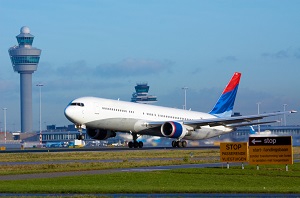 There is a rather daunting amount of information provided by the FAA (Federal Aviation Administration). I was researching crashes at my local library and the librarian was extremely helpful. I was researching aircraft that were manufactured in Arizona that were involved in crashes. She directed me to the FAA’s database. All the information they publish on Arizona aircraft involved in crashes is classified as public records and is available to anyone. She helped me navigate through the publicly available records and data for Arizona and I got the information I was looking for. I decided to write about some of the things I learned from the experience in the hopes that others could benefit from it.
There is a rather daunting amount of information provided by the FAA (Federal Aviation Administration). I was researching crashes at my local library and the librarian was extremely helpful. I was researching aircraft that were manufactured in Arizona that were involved in crashes. She directed me to the FAA’s database. All the information they publish on Arizona aircraft involved in crashes is classified as public records and is available to anyone. She helped me navigate through the publicly available records and data for Arizona and I got the information I was looking for. I decided to write about some of the things I learned from the experience in the hopes that others could benefit from it.
The data is divided into seven large categories, with fourteen subcategories of all varieties, and not just of obvious safety information. Accident and incident reports are available, with both preliminary and final data. The preliminary data covers whatever has been reported over the last 10 days, and the report usually takes place two days after the occurrence. Because the data is so new, it is often subject to change, and those changes are marked with an asterisk. Guidelines for how to discover further information on a specific incident is also detailed. The final data reports go all the way back to 1996, with older reports continually added. Currently there are 476 entries.
On the page for Airline On-Time Statistics and Delay Causes, a graph shows the national on-time performance statistics, with options above to change the parameters to specific carriers, airports, and time. According to the national graph, over 78% of flights were on schedule, and the highest reason for delay was the fault of the aircraft arriving late (6.86%), with the next highest being the air carrier’s fault. The lowest percentage of delays were security related, at 0.03%.
There is also a list of unruly passenger statistics. According to one chart, there were 141 incidents in 2014, and 8 as of April 7th of this year. (If a passenger commits a security violation, that statistic goes on the Transportation Security Administration (TSA) list.) The page also reminds everyone that one incident can lead to multiple violations, and since the FAA’s Re-authorization Bill of April 16, 2000, passengers can be charged up to $25,000 for each violation.
The FAA does more than just provide statistics on airplanes and passengers. One category dedicated to all commercial space data (as in outer space). It includes the most recent licensed launches, permitted launches, licensed reentries, and more. According to one chart, the earliest launch they have on record was in March of 1989. Aviation forecasts are on another page, divided by areas and categories, such as regular aerospace forecasts, long-range aerospace forecasts, and terminal area forecasts. There is also information on policy, international affairs and environment issues and officials. Funding and grant data is available through another section, including the Airport Improvement Program, which provides grants to public and some private owners for the purpose of planning and developing public-use airports (those that are in the National Plan of Integrated Airport Systems (NPIAS)).
The FAA has everything you could possibly want to know about anything to do with aviation, but you might need some help navigating through all the information. Check them out for any inquiries you may have.
